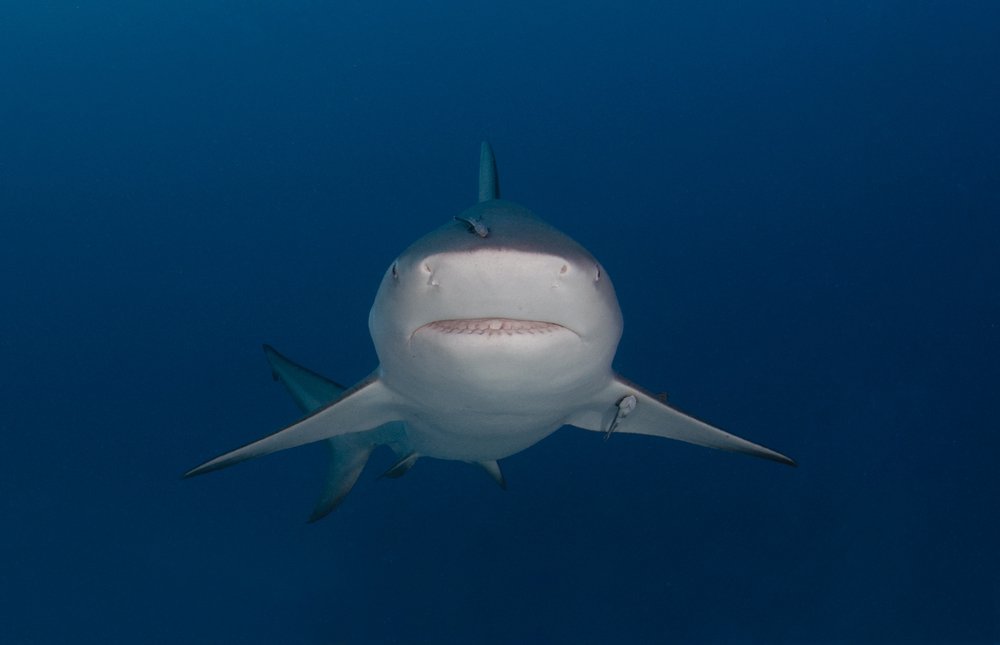How Big Do Bull Sharks Get? (& Other Bull Shark Facts)
Bull sharks, scientifically known as Carcharhinus leucas, are both fascinating and formidable creatures of the sea. They are widely known for their unique ability to thrive in both saltwater and freshwater environments and are among the most robust and aggressive shark species. This article delves into how big bull sharks get, their aggression levels, and their interactions with humans.
How Big are Bull Sharks?
Bull sharks, or Carcharhinus leucas, are impressive in size. On average, adult bull sharks measure around 7 to 11.5 feet in length and can weigh between 200 to 500 pounds. That’s roughly 3 metres and up to 220kg.
Male bull sharks are generally smaller than their female counterparts. This size places them among the larger shark species, although they are dwarfed by the likes of the whale and the tiger sharks.
Their size can be attributed to various factors such as genetics, diet, and habitat conditions. It's interesting to note that young bull sharks, or a cub shark, have a rapid growth rate, becoming sexually mature within a decade.
How Big Was the Biggest Bull Shark?
The biggest bull shark ever recorded was reportedly 13 feet long (just shy of 4 metres). This bull shark, Carcharhinus leucas, was an exceptional case, much larger than other bull sharks typically encountered in the wild. The size of this shark evoked awe and fear, not just because of its sheer size, but also because of its potential impact on its ecosystem and the perceived danger to humans.
How Aggressive are Bull Sharks?
Bull sharks are often considered one of the most aggressive and dangerous sharks. They possess a blunt snout, a dark grey dorsal fin, and a white belly. Their large, robust bodies and strong bite force contribute to their reputation as formidable predators. Unlike most sharks, bull sharks can endure long periods in murky water and can venture into freshwater systems.
However, as an expert in natural history from the Michigan Museum points out, "Bull sharks are definitely aggressive and powerful predators, but they pose very little risk to humans. The chances of being attacked and killed by one are still incredibly small."
You can actually swim with bull sharks if you’re feeling brave enough.
How Many Bull Sharks have Killed Humans?
According to data from the Florida Museum of Natural History, there have been 27 unprovoked fatal bull shark attacks recorded over the last 440 years, an extremely rare occurrence given the global human population. Nevertheless, the reputation of bull sharks as dangerous creatures persists, partly due to their ability to inhabit coastal waters, including popular beaches.
Despite their reputation, it is essential to remember that sharks, including the bull shark, Carcharhinus leucas, are not mindless killers but vital components of their ecosystems. Sharks eat a variety of prey, from fish to other shark species, thus maintaining balance in the ocean's food chain.
The Importance of Bull Sharks in the Ecosystem
Bull sharks are apex predators, crucial for maintaining balance in both marine and freshwater ecosystems by controlling prey populations. Their health often signals the overall health of their habitats.
Sadly, these magnificent creatures are increasingly becoming a threatened species due to overfishing and habitat degradation, primarily caused by human activities. Climate change is another significant threat to bull sharks and other species, altering their natural habitats.
Understanding bull sharks, how big they get, and their behaviours can help demystify these creatures, shifting the perception from fear to respect. Bull sharks, Carcharhinus leucas, like most sharks and other species, play a vital role in our ecosystem. With efforts towards conservation, we can ensure the survival of this species and the continued health of our oceans.
Frequently Asked Questions about Bull Sharks
1. What kind of environments do bull sharks typically inhabit?
Bull sharks are one of the few shark species that can thrive in both saltwater and freshwater environments. They are known to inhabit coastal waters and are often found in high-population areas along the east coast. Bull sharks are also known for their unique ability to swim up rivers.
2. How do bull sharks manage to live in both saltwater and freshwater?
Bull sharks have evolved unique physiological adaptations, such as the function of their kidneys and special glands near their tails, which allow them to retain salt in their bodies even when in freshwater. These adaptations enable them to navigate between different aquatic environments, an ability uncommon among most sharks.
3. How do bull sharks compare to other shark species in terms of aggression?
While bull sharks are widely perceived as one of the more dangerous sharks, it's crucial to understand that "dangerous" doesn't necessarily mean "aggressive towards humans." Most sharks, including the bull shark, prefer to avoid human encounters. That said, compared to other shark species, bull sharks tend to exhibit more territorial behaviour, contributing to their reputation as one of the more aggressive shark species.
4. What is the significance of the bull shark's bite force?
The bite force of a bull shark is among the strongest of any shark species, even surpassing that of the great white shark and tiger shark in relation to body size. Their powerful bite, coupled with their robust build and aggressive nature, make bull sharks formidable predators in their habitats.
5. What do adult bull sharks typically eat?
Bull sharks, like other sharks, have a diverse diet. They feed on various species of small fish and large fish, smaller sharks, birds, and even terrestrial mammals that venture into the water. The ability to eat such a diverse range of food sources is one reason why the bull shark, or Carcharhinus leucas, can inhabit a variety of aquatic environments.



